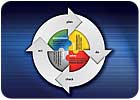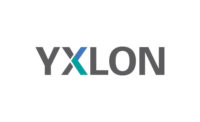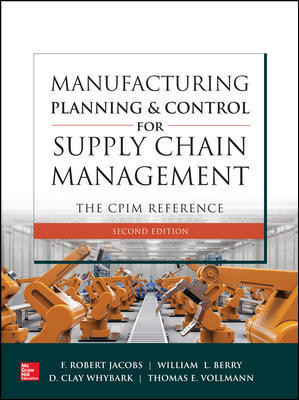
While environment, health and safety, and quality (EHSQ) issues are often handled by individual management systems, the guiding principles behind each of these areas share a common link-W. Edwards Deming.
The American quality guru is most commonly associated with the Plan-Do-Check-Act (PDCA) cycle, an iterative problem-solving process used to resolve quality issues and improve business performance. But it is important to remember the foremost EHSQ standards-including ISO 14001 (environment), OSHAS 18000 (health and safety) and ISO 9001 (quality)-are all rooted in the PDCA or Deming Cycle.
It is incumbent on businesses that encounter regular overlap between these areas to consider the potential benefits of an integrated management system (IMS). An IMS coordinates all of an organization’s procedures, systems and processes within one complete framework and, in an ideal scenario, allows the organization to operate as a seamless whole, with unified objectives across all departments.
To Each EHS Own
But a fulsome IMS is not for every company. Not every business of every size stands to benefit from adopting an integrated management system. Integrate management systems when there is a clear business benefit, not just for the sake of integration.The principle benefits of integrated EHSQ management include both cost-effectiveness and collaboration between intrinsically related EHSQ concerns.
Imagine a business that uses a hypothetical hazardous material in the manufacture of a product at one of its plants and consider how this hazardous material can create near equally significant issues within each EHSQ realm.
Environment: The hazardous material may be toxic to the environment at large and necessitate consideration within the organization’s air emissions monitoring.
Health and Safety: The same hazardous material may compromise the health or directly endanger the lives of employees in the plant.
Quality: The handling and use of the hazardous material may be governed explicitly by existing quality standards.
As an example, look no further than the recent string of recalls associated with the cadmium content in children’s toys manufactured in China. The extended direct exposure of factory workers to the highly toxic heavy metal would necessitate an internal health and safety policy governing safe exposure and use.
Also, given the targeted end user of the toys are children, quality management mechanisms would have to ensure the cadmium content of the toys did not exceed federally regulated maximums affecting the markets in which the product would be sold. But further, since improperly disposed cadmium is known to leach into and contaminate groundwater, provisions would have to be put into place to ensure proper disposal of the material at the plant level.
Pros and Cons
A consideration of the relative advantages and disadvantages of an IMS is a sound starting point to evaluate whether the time has come to integrate management platforms, or whether integration would generate no immediate or long-term payoff.Cost-efficiency: The aforementioned standards share several common requirements, including document control, auditing and training. An obvious cost-reduction arises when a business addresses each of these areas with shared software and processes. Also, registrars tend to provide discounts when they are able to audit two or more management systems together, as opposed to one at a time.
Time-efficiency: While the logistics of implementing an IMS may be complicated at the onset, the relative simplicity of managing EHSQ systems together on an ongoing basis will ultimately save time and frustration.
Corporate Brand: Most businesses understand that a negative EHSQ event-for example, a spill, a product recall or an employee injury-can have a significant impact on a corporate brand, as well as the share price. Applying the same standards to each area by way of an IMS curbs the risk of any such event.
Collaboration: An IMS reduces the silos of information that typically haunt most organizations. Key data can be selectively shared across an organization thereby reducing risk-for example, that associated with the use of hazardous materials-while better capitalizing on opportunities.
Jumping the Gun
While the likely benefits of EHSQ management integration are substantial, an IMS is not for every business. For a company too eager to reconcile EHSQ considerations, some complications may emerge.Some IMS opponents argue that strict adherence to the nuances of one specific set of standards is sacrificed in the name of integration. That is, in defining a broad-base of widely applicable standards to enforce across EHSQ domains, some details are institutionally enabled to slip through the cracks.
It all depends on what specifically a company is attempting to integrate. For example, getting managers across all departments to employ the same audit checklists and reports might be tantamount to mixing apples and oranges. However, leveraging the same auditing software that allows the importing of individual EHSQ checklists can reduce costs.
As M.S. Khalid suggested in 2006’s Establishing and Improving an Integrated Management, the standards governing quality can be far removed from those governing environment, health and safety. However, this notion can be a very particular function of a particular corporate culture and which aspect of EHSQ has the greatest impact within that corporate culture.
Further, an old paradigm suggests some aspects of environment, health and safety are not tied intrinsically to aspects of quality, such as continual improvement in performance, legislative compliance and considerations of risks, but this has changed as businesses constantly try to improve their environment, health and safety performance.
Historically these concerns have been dominated by legislation and quality, by and large, has been customer-driven. What is happening now is that environment, health and safety are being strongly influenced by brand impact and quality is being influenced by new consumer protection legislation.
Among some IMS opponents a notion has emerged that audits can become more complex. However, having an IMS places no demand whatsoever on any company to fulfill a comprehensive EHSQ audit each time an audit is conducted. Rather, businesses need to assess where overlap exists and where it makes good business sense to combine elements.
Above and Beyond
A supposed Holy Grail of business management these days seems to be an EHSQ system that goes a step further and is configured to apply across all business lines, even those outside EHSQ realms. For example, document control, auditing, training and all other aspects of business performance could be governed along the same integrated management standards.According to Robert Pojasek’s 2006 article in Environment Quality Management, “one synergistic or ‘umbrella’ system could enable an organization to ensure the quality of its products...and demonstrate that those products are consistent with the organization’s vision, mission, core values and objectives.”
The basic integration of ESHQ considerations could open the gateway to a holistic and synergistic approach to all business concerns, but this can be an ambitious and sometimes fruitless endeavor if the business in question is not of a size and scope necessary to warrant facing the logistical challenges demanded by such an organizational shift.Q
Tech Tips
Quality Online
For more information on integrated management systems, click on the following:“Enterprise Quality Management Evolves”
“Optimize Your Quality Management System”
“The Automated Management System”

